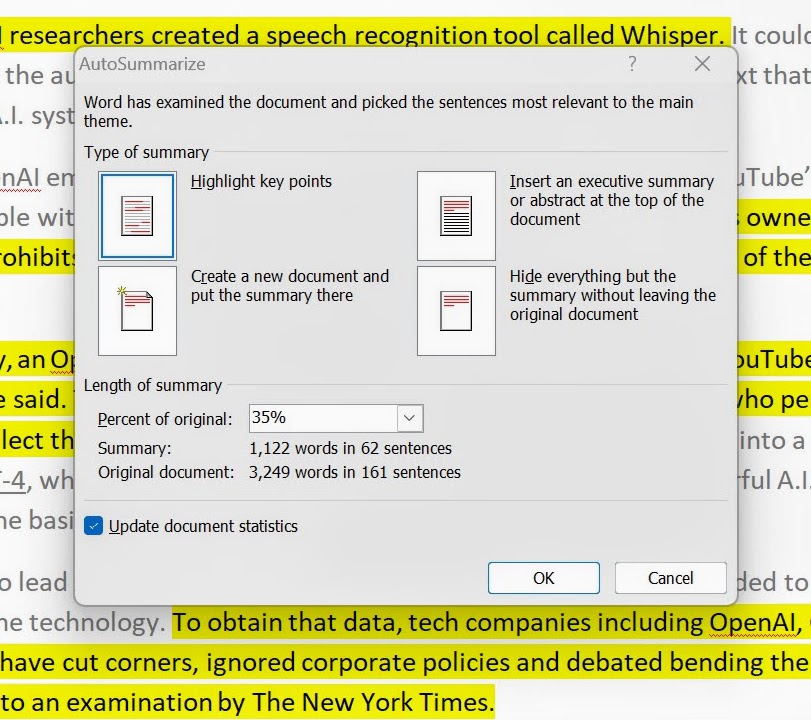Ai has helped us learn the value of summary. We don’t want to read all of those things on the display! Can you summarize these hundreds of pages? We want robots to read for us and give us the important bits.
The AutoSummarize feature was removed after the 2007 version of Microsoft Office. How does it compare to the Ai tools of the modern day?
Modern “Ai summary” features should be benchmarked against ancient technology. We should demand tools that are better than what we had in the past, but what if we can’t remember that past? That’s a problem.

The chatbot is often a clear demonstration of bad UX. It can be difficult to direct a generated image with precision or define a specific writing style. We are probably all aware that we’ve read bad Ai-generated copy or seen hands with extra fingers. And we’ve all likely seen lousy contemporary art or read copy by non-native English speakers. We judge.
UI should prompt humans to understand what’s possible. In a world where a quality UX is valued, we know that humans should learn through UI. The user shouldn’t have to try and describe what they want using hacky phrases and words. We used to know these things, but Ai hype has blinded many.
We need the past. Speculation and futurism is fun, but many of the systems sold as Ai are not new. We all want to build something revolutionary, but we are rarely building something entirely new. Perspective is important.
Many of the tools sold as Ai today do not provide functionlity superior to rules-based systems. Grammar tools existed for decades with relatively low hardware requirements. NLPs could already recognize sentence structures and define the information contained in the writing. Rules-based systems do much of what’s been “recreated” with machine learning. In computing, there’s usually more than one way to do anything. Everything is a compromise.
Rules-based systems don’t hallucinate. These systems need to work the same way every time, assuming the inputs and flow can be repeated. This characteristic is critical for many business operations. Systems are mostly expected to perform a task the same way every time. When a system delivers an unexpected result, we usually call it a bug. We have probably all encountered software bugs. But for systems with Artificial Intelligence, many have adapted to different standards.
2007’s ribbon UI was perhaps a UX nightmare. Functions and features were hidden behind layers of popups and menus, but the features themselves are potentially still relevant today. All this UI was created by people: living, breathing, thinking people. Microsoft didn’t hire just anyone to work on what was their most valuable software package.
Let us reflect on the past. We cannot compare our modern systems to past solutions unless we can remember them. That’s why it’s important to seek wisdom from experienced sources. Who are your sources?
